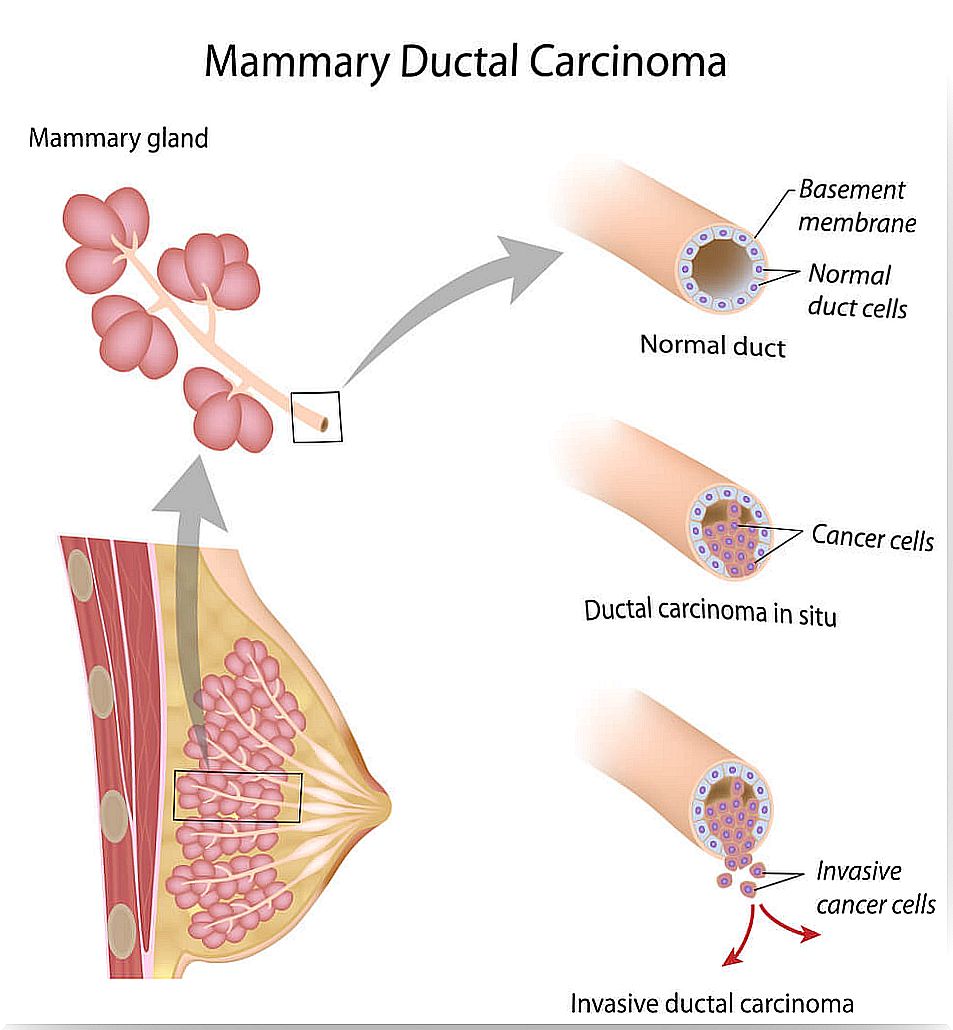Biology Of Breast Cancer: Origin And Types

Why is studying the biology of breast cancer crucial in fighting the tumor? It has always been said that the best way to defeat your enemy is to know him, know how he behaves and discover his weak points. Well, something similar does molecular and cellular biology, since it analyzes the differences between a healthy cell and a tumor cell.
The results obtained in these studies of tumor behavior allow the medical community to develop better therapeutic strategies. In the same way, they can fix better targets and design less damaging treatments.
Recently, Australian researchers have discovered a line of communication between healthy and tumor cells that sheds some light on the most aggressive subtype, triple negative, and gives hope to women who suffer from it.
How does breast cancer start? Biology of a mass
The correct term to refer to this process is carcinogenesis, which are the set of phenomena that determine the appearance and development of a tumor. These risk factors can be:
- The genetic inheritance.
- Endogenous and exogenous estrogens.
- Spontaneous mutations.
- Chemical and physical carcinogens.
The process begins with the irreversible alteration of the original DNA molecule. As a result, gene expression is modified and wrong proteins are made.
In the case of breast cancer, the altered proteins that act as carcinogens or initiators of the tumor are: estrogens, prolactin and progesterone. The result is uncontrolled cell growth that culminates in the development of cancer.

Types of breast cancer
Not all types of breast cancer are the same. Analyzing the development and origin of the tumor is crucial when deciding on treatment. The biology of breast cancer establishes a classification of the different tumors based on different criteria.
- Depending on the area that is affected, be it the lobules, the ducts or the intermediate tissue. This is of vital importance, since where the tumor originated determines its development.
- The appearance of tumor cells seen under the microscope allows us to classify them into subtypes: tubular, medullary, and papillary, and thus better guide treatment.
- Or, if unfortunately, they are recurrent or metastatic. In these cases, a study of the degree of cell differentiation must be carried out. This term refers to the maturation of the cell, at its age. Breast cancer is classified into 3 grades, where the third is considered the most aggressive.
In this pre-classification we have not talked about the important genetic component that marks the development of cancer. Likewise, the analysis of these genetic factors can allow a correct sub-classification of the different types of tumors.
What genes are affected?
Eva Ciruelos, a medical oncologist at Hospital 12 de Octubre and president of the Solti Group for breast cancer research, recently held conferences to analyze the latest advances in breast cancer research. During his speech, he emphasized the importance of knowing the genetic origin of tumors:
Therefore, these three classic types mentioned by Dr. Ciruelos and on whose sub-classification the treatment depends are the following:
- Luminal : it includes tumors that are positive for the estrogen receptor. Likewise, if they are positive for the progesterone receptor, they belong to the Luminal A subtype and, if they are negative, to Luminal B.
- Triple negative : includes breast tumors that test negative for the estrogen, progesterone and HER2 receptor.
- HER2 : This type includes tumors that have the “epidermal growth factor receptor 2 (HER)” oncogene.

A little hope
Thanks to the information obtained by breast cancer biology research teams, great advances in treatments have been made.
After decades of research, current scientific teams can focus on such relevant aspects as cell proliferation or the reactions of the immune system to tumors. In fact, the discovery of tumor stem cells has represented an important advance in the classification of tumors. Without research there is no cure.










